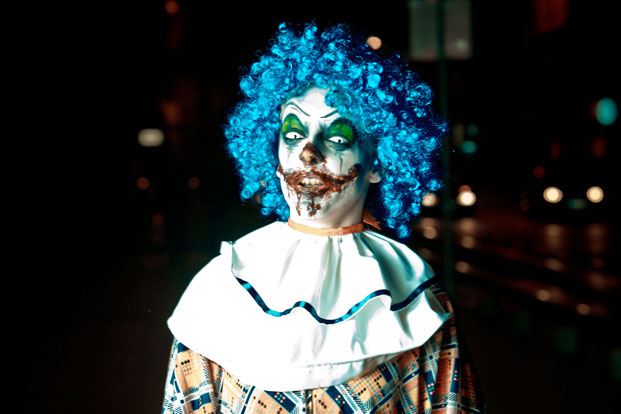Are you afraid of spiders? Do you dread speaking in public? What’s your reaction when you’re 30,000 feet in the air, and the plane starts shaking from turbulence?
All of the above situations are phobias, which are clinically defined as unreasonable fear and overwhelming dread of a situation, object or thing. Phobias do not pose a real threat but do provoke extreme anxiety and avoidance that can affect your life in negative ways.
All of us have phobias of some type or another. Most are minor and don’t require psychological treatment. Things like fears of snakes don’t really matter in an urban setting, where the chances of encountering a reptile are pretty much nil or having to take the staircase rather than endure an elevator’s confinement.
But there are some things that can be debilitating to your social and professional lives, and these are matters that must be taken seriously.
There are millions of people who have phobias. To cite one example, the Anxiety Disorders Association of America reported that 15 million Americans suffered social anxiety disorders, with slightly more than one-third of that group having them for a decade or longer.
Three Types of Phobias
There are three main categories of phobias:
Specific – These are phobias that focus on a single object or situation that is way beyond a little trepidation. They include such things as a fear of certain animals (dogs are a big one); situations (flying is a common worry); and incidents (crowded rooms are often concerning). Many people are phobic about more than one thing.
Social – Way beyond shyness, social phobia is a two-part problem, embracing a fear of public observation and a self-consciousness that wishes to avoid humiliation. The haunting fear of others’ inegative assessment is the driving force of this phobia.
Agoraphobia – Although many believe this is strictly someone who is house-bound, that’s only partially correct. Agoraphobia is actually a fear of anticipated situations and having no escape. Elevators, public transportation or just taking a walk outside the home are terror-filled situations for the agoraphobic, which usually lead – yes – to staying at home, where none of the dangers are apparently present.
All phobias have a common reaction base. They include uncontrollable panic, dread or terror when confronted with the source or object of fear; a desire to do almost anything to avoid that fearful object or source; an inability to cope with that phobic reaction; physical manifestations of panic, including panting, sweating, rapid heartbeat, difficulty breathing and intense anxiety; a feeling of depression because because phobics know fears aren’t grounded in reality; and, if you have a phobic child, extreme clinging or crying.
Age is a prime factor in developing a social phobia, as most manifest themselves by age 13. Specific phobias happen earlier and typically arrive by age 10. Agoraphobia comes later, usually in the late teens to early 20s, and mostly before the age of 35. If you’re a sensitive soul prone to inhibitions or previously have been attacked by a dog or trapped in a room, you may develop phobic fears based on those prior occurrences.
Why phobias develop is still largely unknown to science. But as genetic knowledge increases, more researchers believe that it is linked to family history and potentially ancestors. Yes, it’s apparently in the genes to fear certain things, but working with trained psychologists or doctors has helped many people conquer their affliction.
It’s imperative not to dismiss phobias that keep you housebound or otherwise socially isolated because a host of serious conditions can spring from your avoidance, including deep depression, stress, relationship problems, lack of social skills and even suicidal tendencies.
Strange Behaviors
While phobias can be serious, they also can be attached to some very strange concepts, objects or ideas that may seem like they’re made up. But to the person suffering from the anxiety they cause, they are very real.
Here are some of the most curious objects of phobia:
1) Xanthophobia – A fear of the color yellow, which can range from yellow paint to daffodils and the sun. In extreme cases, mentioning the word “yellow” may provoke the phobic subject.
2) Somniphobia — A fear of falling asleep. Sufferers of this condition associate falling asleep with dying, although some may not like the feeling of not being in control. Still others fear outrageous nightmares, and the busy bees among us don’t like the downtime caused by necessary sleep.
3) Phagophobia – A fear of swallowing. One doctor reported a patient who lost more than 30 pounds because of the anxiety associated with swallowing. The patient reported that swallowing caused a lump in the throat. Psychologists recommend distractions like eating while doing something else as a way to overcome this phobia, which obviously can lead to serious health problems if not treated.
4) Coulrophobia – A fear of clowns. Yes, those funny, funny people at the circus actually cause massive anxiety in certain people. Granted, some of them may come off as a little odd (and Stephen King certainly didn’t help when he wrote It, which features a clown doing nasty things), but researchers largely blame something called the “uncanny effect.” This postulates that something that moves like a human and vaguely looks human but is not quite natural may trigger a fear response.
5) Papaphobia – This is an unnatural fear of the Pope. Perhaps it’s because he represents something supernatural and potentially world-destroying or maybe it’s because of the possibility of judgment.
6) Pogonophobia – The fear of beards, familiar to any parent who has ever had to rescue a screaming child from Santa’s lap.
There are literally hundreds of phobias cataloged by the medical community, some of them equally bizarre. But if you are a person who suffers from an unreasonable fear that holds you back, know that therapeutic talk, anti-anxiety medication and a supportive atmosphere can help you overcome issues and make life just a little better.

Leave a Reply